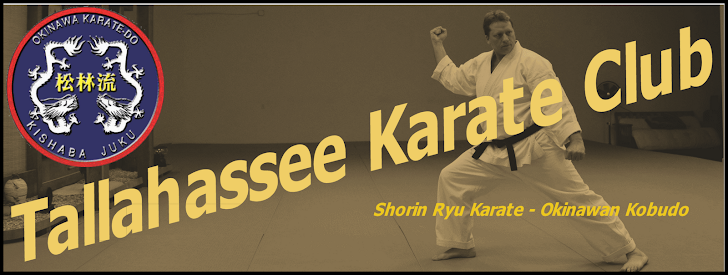I started writing this post a few years ago and left it in unfinished, draft form. I opened it back up recently and re-read what I had written, and promptly deleted all of it.
Why would I do such a thing?
Because my perception of Naihanchi points has changed, like my perception of a lot of the principles we practice in Kishaba Juku.
I had written about how there are places in the Kata where you are coiled up, like a spring, and ready to go, much like the beginning of Naihanchi, or the places where you step across.
What I want to say about it now is a little different.
Naihanchi points are the places in the movement of the Kata where your feet come together, then move apart. When you are at these places, you are ready to move in any direction. You can change your mind. The big difference now, is that when I think about Naihanchi Points, I think about maintaining relaxed koshi, instead of coiled, springlike (tense) koshi. I also think about maintaining my centerline over my center of gravity, keeping my elbows connected to my koshi, and then extending the technique as I move into the next position.
Naihanchi points are in all Kata, but it is hard to find them if you practice wide stances. Our stances are quite narrow. In fact the heels, are basically, almost on the same line. This is true whether we are doing natural stance, front stance, cat stance, or cross leg stance. If you were to draw an imaginary line on the floor, then stand over it in your stance, the left heel and the right heel would be touching opposite sides of the line.
The use of narrow stances enables the Naihanchi Point principle. If the stances are any wider, you can't bring the feel together into the naihanchi point, and still maintain the same centerline throughout the movement.
The next thing is the position of the hips throughout the movement. Our hips maintain a somewhat open position, maybe 45 degrees. They never transition to a closed (hips completely forward) position at the beginning or end of the movement. This allows a connection on one side of the body, by aligning all the bones, and not creating any place where the connection is lost.
Why would I do such a thing?
Because my perception of Naihanchi points has changed, like my perception of a lot of the principles we practice in Kishaba Juku.
I had written about how there are places in the Kata where you are coiled up, like a spring, and ready to go, much like the beginning of Naihanchi, or the places where you step across.
What I want to say about it now is a little different.
Naihanchi points are the places in the movement of the Kata where your feet come together, then move apart. When you are at these places, you are ready to move in any direction. You can change your mind. The big difference now, is that when I think about Naihanchi Points, I think about maintaining relaxed koshi, instead of coiled, springlike (tense) koshi. I also think about maintaining my centerline over my center of gravity, keeping my elbows connected to my koshi, and then extending the technique as I move into the next position.
Naihanchi points are in all Kata, but it is hard to find them if you practice wide stances. Our stances are quite narrow. In fact the heels, are basically, almost on the same line. This is true whether we are doing natural stance, front stance, cat stance, or cross leg stance. If you were to draw an imaginary line on the floor, then stand over it in your stance, the left heel and the right heel would be touching opposite sides of the line.
The use of narrow stances enables the Naihanchi Point principle. If the stances are any wider, you can't bring the feel together into the naihanchi point, and still maintain the same centerline throughout the movement.
The next thing is the position of the hips throughout the movement. Our hips maintain a somewhat open position, maybe 45 degrees. They never transition to a closed (hips completely forward) position at the beginning or end of the movement. This allows a connection on one side of the body, by aligning all the bones, and not creating any place where the connection is lost.
Moving the whole body as one unit, and maintaining the centerline throughout, are also key to finding the Naihanchi Point.
It is very difficult for me to actually write about this in a way that makes sense, so I may have to create a video to explain it further. In the meantime, try it out. Experiment and see what it feels like. Let me know your thoughts in the comments.
